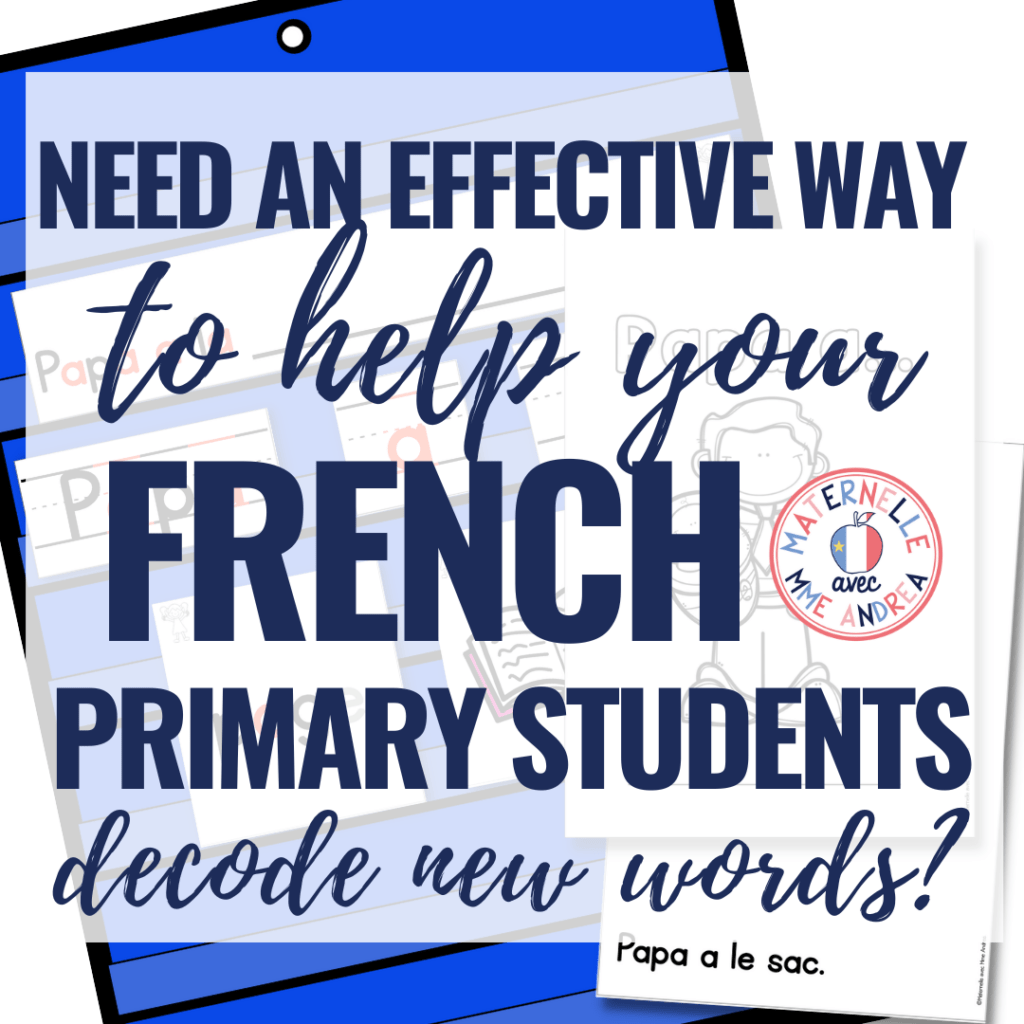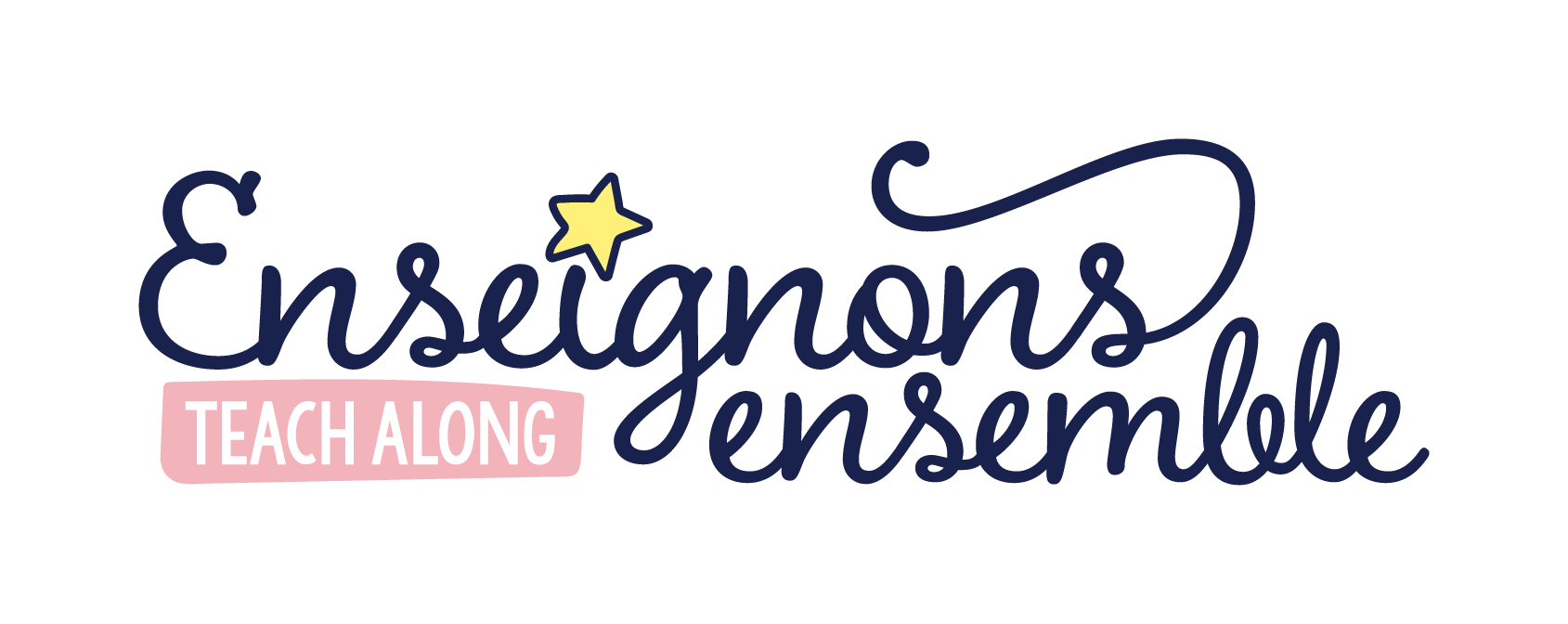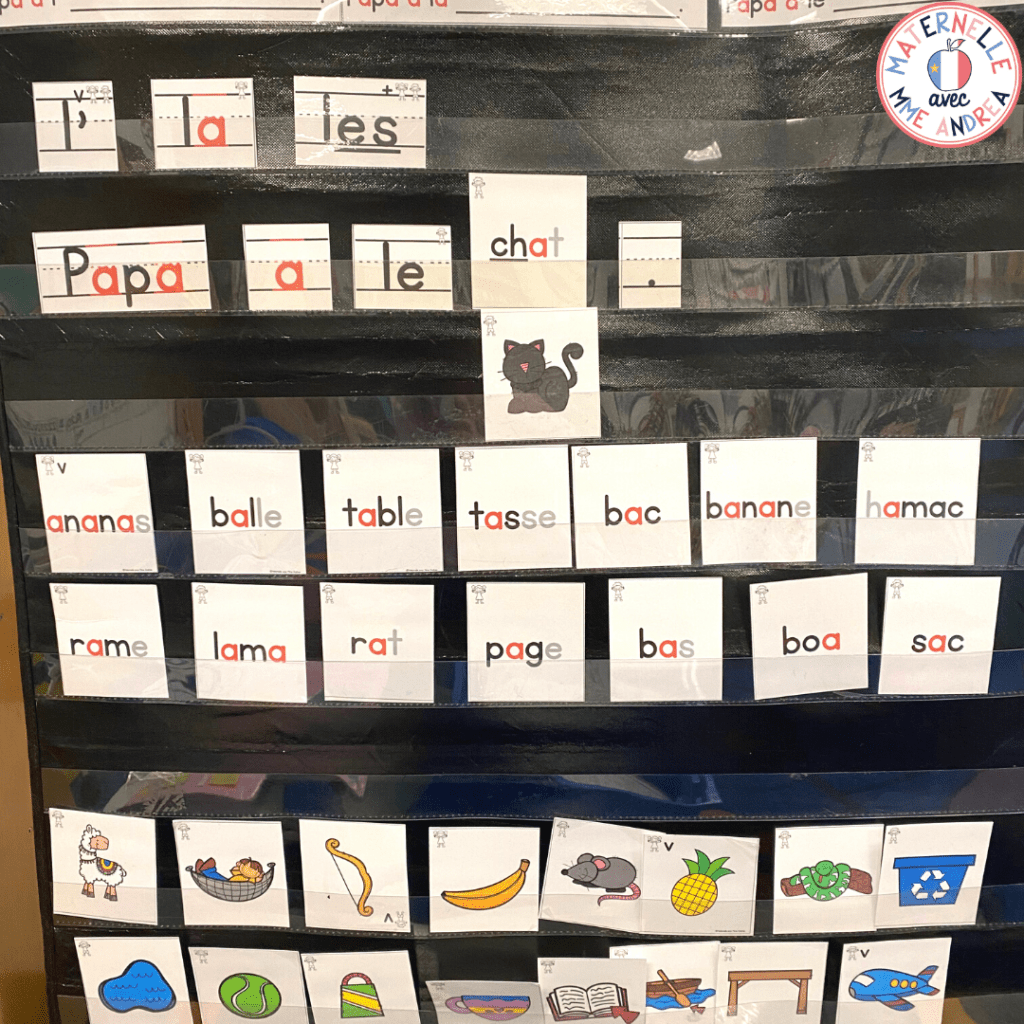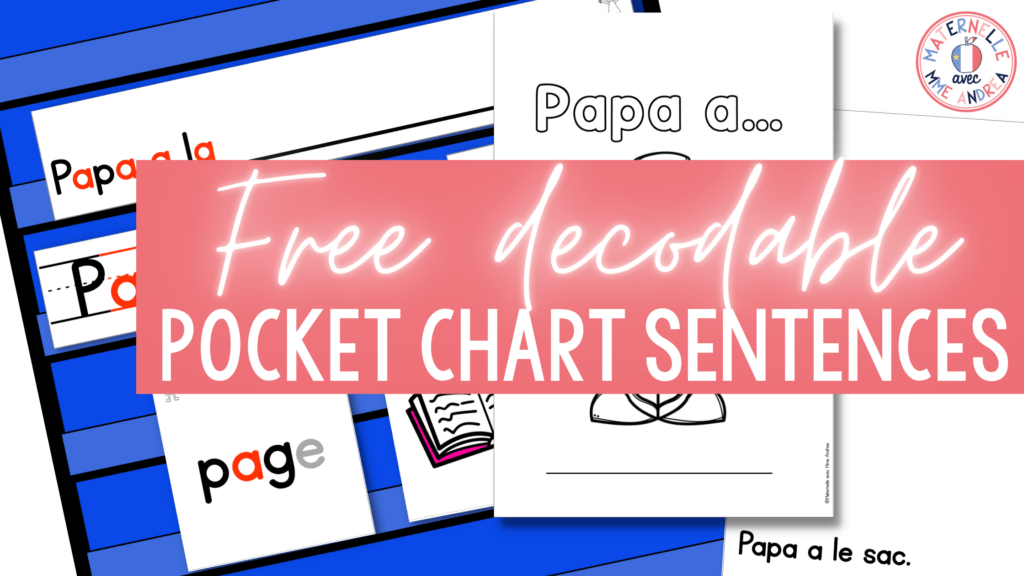If you remember my blog post last week, I took a few moments to talk about why giving our students time to practice decoding (reading sound by sound) and encoding (writing sound by sound) is so important for primary students.
Understanding decoding and encoding helps with reading skills, phonemic awareness and written language.
Giving students the opportunity to practice these skills helps them become better readers and writers!
I’ve been working hard this year to give my students more opportunities than ever before to practice encoding and decoding all throughout our daily routine.
If you read my blog post last week, you already know how I have adapted one of my students’ favourite centres – Écris la salle – to make it better align with the Science of Reading.
This week, I wanted to talk about how I have recently switched up another favourite.
If you’ve been following me for awhile, it might be one of your favourites, too — it’s one of my bestsellers!
I’m talking about…
Les phrases fantastiques!

Les phrases fantastiques: in the past
(First of all, if you aren’t familiar with Les phrases fantastiques, it’s my pocket chart sentence building resource. Students use a model sentence to build and read a sentence, word by word, adding their own vocabulary word at the end. Then, they write the sentence on a recording sheet. You can see the original bundle HERE.)
I still believe that my original set of Phrases fantastiques allows students to practice a TON of literacy skills. They learn high frequency words, lots of vocabulary, directionality, punctuation, handwriting, spaces, are introduced to the concept of masculin/féminin and more.
At my school, the maternelle classes use these. I wanted to continue the routine in première année, but I wanted to switch up the focus, and make sure everyone was still learning.
My first grade students do still need practice with writing mechanics, but I felt that I could make some adjustments to encourage my students to actually READ (decode) the vocabulary words featured in the sentences, rather than just memorize them.
I wanted each set to be decodable and focused on whatever sound we were working on at the time.
Les phrases fantastiques: in my classroom now
This year, I decided to test out a version of Phrases fantastiques with my students that would encourage them to decode and encode words with a target sound. I created a resource that worked on the “a” sound, taught it to my students, and it worked exactly as I hoped!
My students used the model sentence to build their own sentence, and were able to use word cards withOUT pictures to finish the sentence. Since the words were all decodable, they could actually read what each word was!
To make sure, I added picture cards (without words) and had them add the picture card after the word they chose. This way, I knew if they decoded the word correctly.
Then, we would choose one sentence as a group to write. I would flip over the word card so students could encode it sound by sound. Then I’d flip it back so they could check how many sounds they heard correctly.
(Note — if you are still working on building vocabulary with your students and they aren’t decoding yet, I have included cards with the picture + word both together). :)
I also created mini books for each main model sentence (as I did in the original resource). This time, I made two versions of each — one with pictures, and one without pictures. During small groups with my struggling readers, I used the pictureless version and got them to read and illustrate the books themselves.
Then, they added the books to their take-home reading bags for extra practice.
Want to give it a try?
I’ve got a bundle for 6 vowels on TPT and in my shop (a, e, i, o, u, and é), and a bigger bundle for sounds made up of 2+ letters in the pipeline. You can check it out by clicking HERE!
But, if you want to try them out before you buy, I have a free sample of the letter Aa version for you to try! All you have to do is click here, and put in your name and email. :)
As you can see from the picture, the words included are decodable — all letters make their sounds, the target sound is in red, and any “lettres muettes” are in gray.
(Exceptions: I have included “les” as an option for a model sentence. If your students haven’t yet learned the “es” sound, you can leave that one out).
This is just a sample of the full resource — I’ve included a table for you inside of the freebie outlining what else is be included in the full version.
The full version for each vowel is over 60 pages! I am SO excited about these, and I hope you are too!!
One thing that makes teaching so challenging (but also so fun) is that we are always learning new things and new ways to improve our teaching and our students’ learning.
I don’t take it lightly that you are here following along on my teaching journey, and I look forward to sharing more new resources with you in the future as I continue learning and growing as a teacher!



